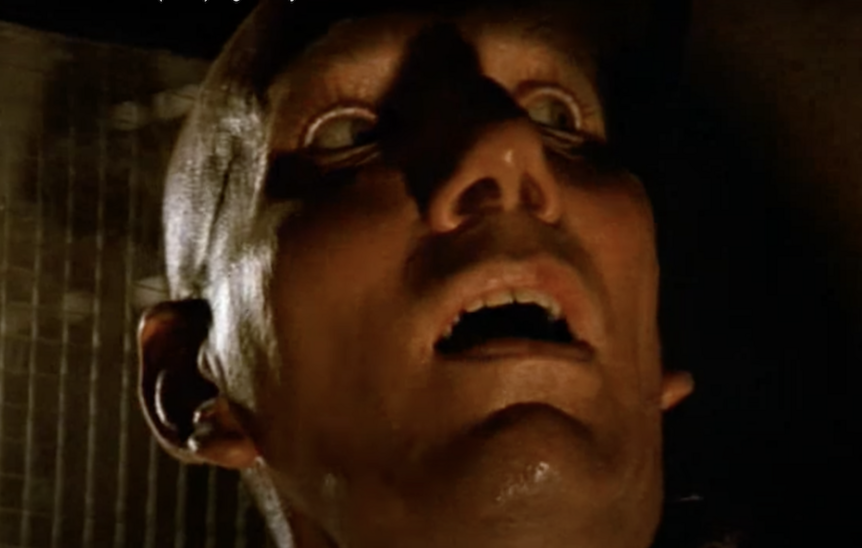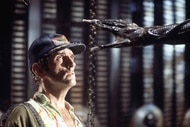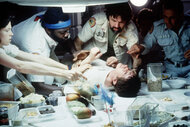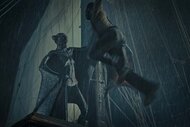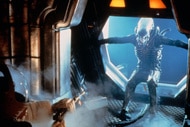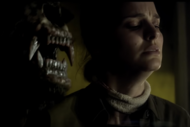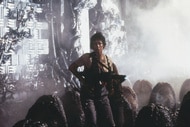Create a free profile to get unlimited access to exclusive videos, sweepstakes, and more!
It’s a Miracle Alien 3 Ever Got Out of Development Hell
Finding a story everyone could agree on turned out to be harder than killing a room full of Xenomorphs.
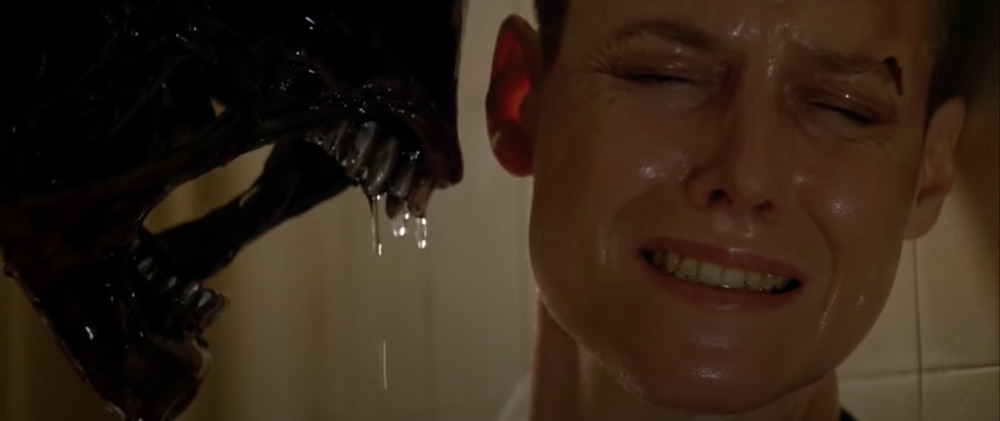
On some level, every step in the story of the Alien franchise (most of which is airing on SYFY this month) is one of struggle, a merging of ideas and personalities that eventually created box office gold and a killer film series that keeps reviving itself in some form or another more than 40 years after the original film. Aliens, for example, took seven years to create, with various stalls and delays built in and director James Cameron still trying to prove himself as an action cinema commodity.
But, for all Cameron's struggles, the making of Aliens looks like only a slightly bumpy road compared to the hard ride that was Alien 3. Looking back on it now, flaws and all, it's a bit of a miracle that David Fincher's feature film debut holds together as a watchable film at all. While the story of Aliens was about proving a sequel could work (and proving Cameron was the right filmmaker to do it), the story of Alien 3 was about simply finding a story everyone could agree on. That turned out to be harder than killing a room full of Xenomorphs.
Inside the Development Hell of Alien 3
After Aliens proved to be a hit at the box office, Twentieth Century Fox naturally wanted another sequel, but the producing team of Gordon Carroll, David Giler, and Walter Hill were determined to avoid repeating themselves. At first, it seemed like they would succeed, as Giler and Hill knocked around story ideas that would explore the duplicitous nature of the Weyland-Yutani corporation and what they wanted to do with their plan to militarize the alien creatures. They developed what was essentially an extended Cold War metaphor in space, involving Weyland-Yutani facing off against a kind of socialist separatist bloc, and brought in cyberpunk author William Gibson to develop a script.
Gibson's script, which involved Ripley's escape ship from Aliens encountering both the Union of Progressive Peoples (a breakaway society engaged in rebellion against the capitalist Earth) and a Weyland-Yutani installation that basically served as a combo of space station and shopping mall. Eventually, both sides of the conflict would be infested with Xenomorphs, leaving them no choice but to band together to face a common enemy in a planned fourth installment. Gibson's script has since developed a following of its own, and has been adapted into both a comics series and a novel.
For More on Alien:
A Timeline of the Alien Franchise's Xenomorph in All Its Terrifying Forms
Game Over, Man! The 13 Scariest and Most Iconic Moments From the Alien Franchise
In Praise of the Incredible Ensemble Cast of Alien
Sadly, the Gibson script would be far from the last try at an Alien 3 story. Director Renny Harlin, fresh off A Nightmare on Elm Street 4: The Dream Master, was brought in to direct by this point, but producers were unhappy with Gibson's draft, and Gibson was unhappy with the studios and eager to go off and work on other projects. So, Harlin suggested Near Dark and The Hitcher writer Eric Red come in and rewrite the script. At this point, original star Sigourney Weaver wasn't especially interested in returning as Ellen Ripley, something Gibson's script dealt with by putting her character in a coma and making Michael Biehn's Hicks the action star. Red's draft opted to take a different approach entirely, introducing new characters and new settings that, ultimately, led to another disappointment for producers. Harlin, fed up with the development process, exited as director.
Around this point, we're two years or so into the saga of Alien 3, with two very different scripts and one director already gone. Hill and Giler had initially hoped to develop Alien 3 and 4 back-to-back, but now all the energy, and the money, spent on development became singularly focused on getting Alien 3 out the door in time for a 1992 release. The producers turned to Critters 2 writer David Twohy to rework Gibson's original script, but as Twohy set to work, the Soviet Union collapsed, leaving the Cold War metaphor dead in the water. That meant new ideas were needed, so Twohy basically started over, and introduced the prison planet concept that would eventually make it all the way to the finished film. Of course, at this point, the story was still forging ahead without Ripley, and Twentieth Century Fox president Joe Roth decided that wouldn't do. For him, Ripley was the key to making a new sequel work, so Twohy went back to his draft and rewrote it to make Ripley the heroine once again. Weaver was eventually coaxed back with a hefty payday and a co-producer role that gave her plenty of input on the character.
But of course, the project still needed a director. Having recently seen Vincent Ward's film The Navigator, Hill pitched the New Zealand-born director to Roth, and on the flight over to Los Angeles, Ward devised a story of his own. In this version, Ripley's escape pod would crash land on a "wooden planet" inhabited entirely by monks who despised modern technology and viewed the arrival of a woman, and the Xenomorph, as a test from their god. The studio was intrigued by the concept, forged ahead with Ward as director, and hired screenwriter John Fasano to pull the concept together into a cohesive story. Ward's concept got far enough that the film actually entered pre-production, with sets under construction on the massive 007 stage at London's Pinewood Studios, but Hill and Giler weren't convinced. The wooden planet concept irked them from a narrative standpoint, so they worked to rewrite the Fasano script, at one point bringing in script doctor Larry Ferguson in an effort to further flesh things out. Ward was ultimately so frustrated by the interference that he left, while Twohy also departed upon learning that another version of Alien 3 was in development even as he'd been putting the finishing touches on his script.
Racing against the clock to finally get Alien 3 in production, Hill and Giler rewrote the script themselves, and brought in newcomer Fincher to direct, based on his dark approach to the material and the dirty space aesthetic he wanted to keep pushing within the franchise. The story they ultimately agreed upon was a hybrid approach of Ward's monks and Twohy's prison planet, creating a world in which fundamentalist prisoners encountered Ripley and a new version of the Xenomorph. The story was finally set, even if Fincher did have to deal with rewrites constantly arriving on set every day.
So, that's the long, long story of how Alien 3 finally started filming. There were other bumps in the road, of course, including deleted footage from Fincher's original concept that later arrived in the form of an "Assembly Cut" on various home video releases. Considering how long it took to get to the point that Fincher was actually making the movie, though, it's remarkable that the film holds together as well as it does. It's a case of development hell eventually paying off in something watchable, and the stylistic flourishes Fincher displayed here would later mature into films like Seven and Fight Club. It's also, for all the struggles, a reminder of the durability of Alien as an idea. No matter how many years fall between installments, it remains a story that's very, very, hard to kill.
Check the schedule to catch Alien 3, along with many of the other films in the seminal sci-fi franchise, airing on SYFY.
Originally published May 18, 2022.
